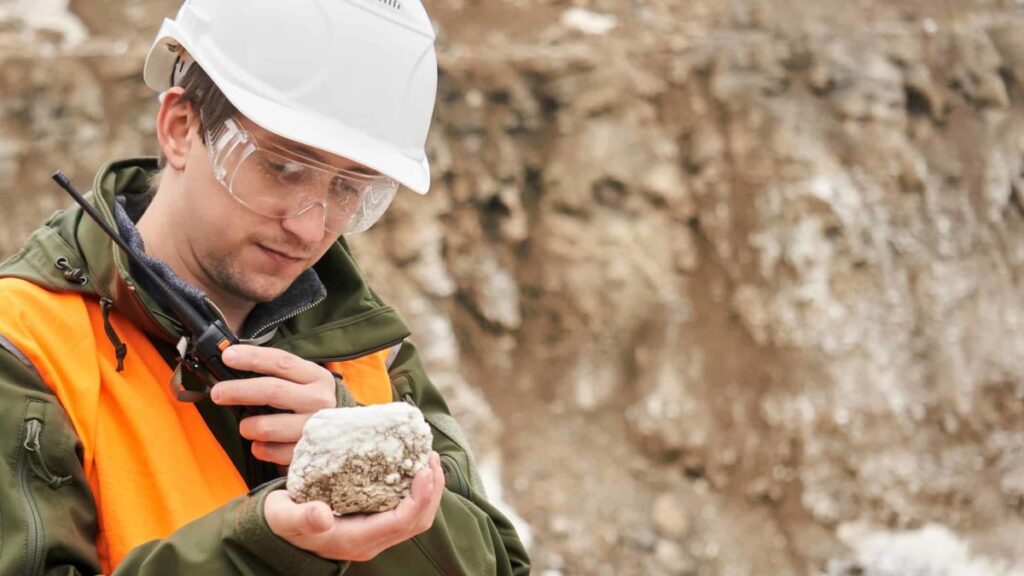
In recent weeks, the mining sector has experienced a whirlwind of activity, particularly in the realm of precious metals and rare earths. As gold and silver prices soar to unprecedented heights, the spotlight has shifted to rare earth elements amid escalating trade tensions between China and the United States. These 17 elements are crucial to a myriad of modern industries, including clean energy, electric vehicles, and consumer electronics. With China controlling a significant portion of the global supply chain, the stakes are high.
According to the International Energy Agency, China is responsible for 60% of the world’s rare earth production and over 90% of its refining. This dominance was underscored when China expanded its export controls on rare earths earlier this week, adding five more elements to its list of restricted exports, bringing the total to 12. The United States, which relies on China for approximately 70% of its rare earth imports, is feeling the pressure. In response, former President Trump threatened to impose 100% tariffs on Chinese products, and reports suggest that the U.S. government is considering investing in Australian rare earth projects to secure its supply chain.
Gina Rinehart’s Strategic Moves
Amid these geopolitical tensions, investors such as Gina Rinehart, one of the world’s wealthiest women, have been strategically investing in Australian Securities Exchange (ASX) mining companies with rare earth projects outside of China. Rinehart’s investments, either directly or through her privately-owned company Hancock Prospecting, are focused on four ASX-listed companies that are making significant strides in the rare earths sector.
Lynas Rare Earths Ltd (ASX: LYC)
Lynas Rare Earths Ltd stands out as the leading rare earths company on the ASX with a market capitalization exceeding $20 billion. The company owns the Mt Weld mine in Western Australia, one of the world’s most significant rare earths deposits. Additionally, Lynas operates a major processing facility in Malaysia, one of the largest outside of China. Gina Rinehart began acquiring shares in Lynas in early 2024, and currently holds an 8.2% stake valued at approximately $1.7 billion. Since the beginning of the year, Lynas shares have surged by 195%.
Arafura Rare Earths Ltd (ASX: ARU)
Hancock Prospecting invested $60 million for a 10% stake in Arafura Rare Earths Ltd in late 2022, aiming to expedite the development of the company’s Nolans project in the Northern Territory. Arafura is now in the final stages of securing financing for Nolan’s development, having obtained over US$1 billion in conditional debt funding and signed offtake agreements with major global partners. Rinehart’s current 9.4% stake in Arafura is valued at around $120 million, with the company’s shares rising by 238% this year.
Brazilian Rare Earths Ltd (ASX: BRE)
Brazilian Rare Earths Ltd, a relatively new player on the ASX, focuses on exploring district-scale rare earths discoveries in north-eastern Brazil. The company went public in December 2023, with Hancock Prospecting as an early investor. Brazilian Rare Earths continues to advance its Rocha da Rocha project, having identified numerous deposits across its largely unexplored tenure. This week, the company secured $120 million in commitments to further its project. Shares have climbed 147% since January, with Rinehart’s 5% stake valued at over $30 million.
St George Mining Ltd (ASX: SGQ)
St George Mining Ltd recently secured $72.5 million in funding to progress its Araxá rare earths and niobium project in Brazil. Hancock Prospecting contributed $22.5 million to this capital raise. The Araxá project is touted as a “world class” resource with significant growth potential, and the new funding will support a range of activities, including resource upgrades, permitting, and economic assessments. St George’s shares have skyrocketed by 550% this year.
Implications and Future Outlook
The investments by Gina Rinehart and Hancock Prospecting in these ASX-listed companies underscore a strategic pivot towards securing rare earth supplies outside of China’s influence. As global demand for these critical elements continues to rise, the importance of diversifying supply chains becomes increasingly apparent. The geopolitical landscape surrounding rare earths is likely to remain dynamic, with potential policy shifts and new partnerships shaping the future of the industry.
Looking forward, the success of these companies in advancing their projects could have significant implications for the global rare earths market. As the world moves towards cleaner energy solutions and advanced technologies, the demand for rare earth elements will only intensify, making these strategic investments by Rinehart a potentially lucrative endeavor.






